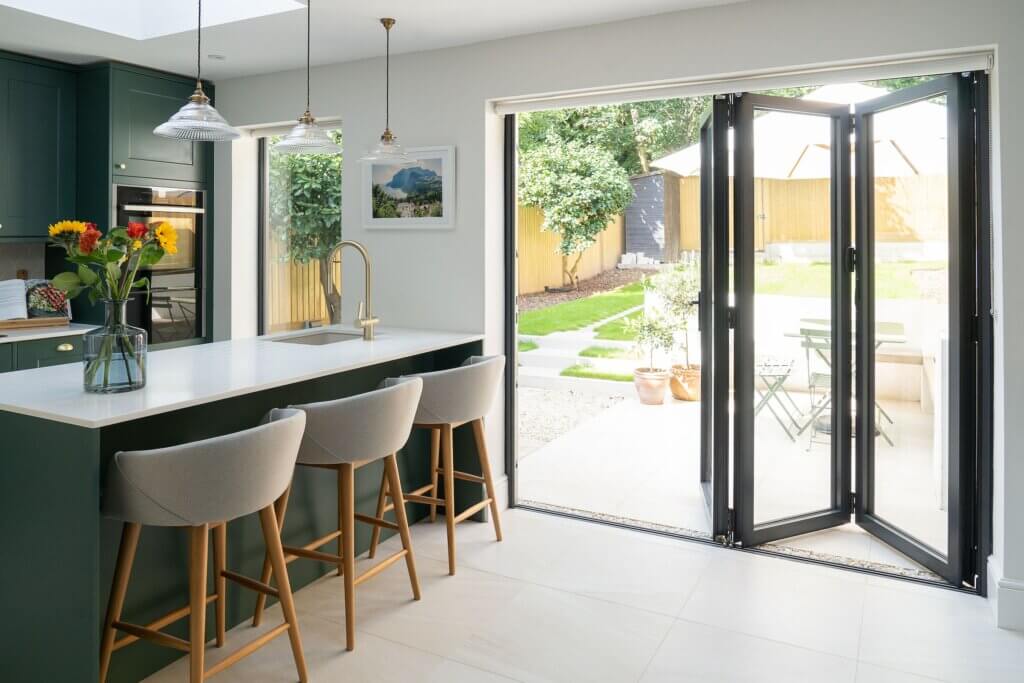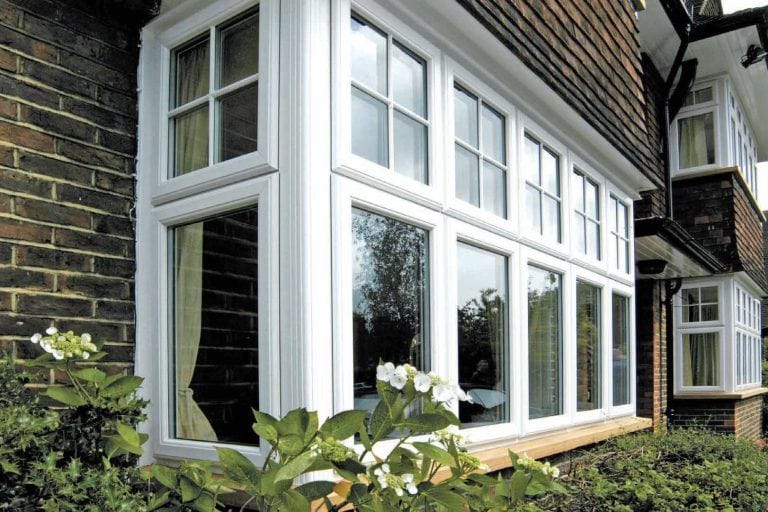
Window condensation happens more often during the colder months of the year. If left untreated, it can cause some serious issues, so it should be addressed as soon as possible.
Ignoring condensation build-up can damage your windows as well as soft furnishings and can cause mould to form, which is detrimental to your health.
Condensation is caused by high moisture levels in the air forming on cold surfaces such as your windows. This happens when the temperature outside is colder than inside your home.
You cannot see it with the naked eye, but the air circulating around us carries millions of microscopic water droplets. Humid weather can also cause the water content of the air to become more concentrated and increase the risk of water droplets condensing on cold window surfaces.
Understanding the dew point
The air holds a lot of moisture, but the water droplets are well-spaced apart when the air is warm. However, in cool air, the water droplets pull together and form into larger droplets that are heavy and turn into a visible liquid that forms drops of water on cold surfaces such as windows.
This is known as the dew point. This is when you can see water droplets forming on your windows. If you ignore this water build-up, it can be detrimental to your windows. Even waterproof surfaces can suffer from pooling water – think of mould and limescale build-up in your shower or around your bath.
Most people with double glazing think that their windows are built to withstand water, but the seals around your window frames can start to dry out and crack when constantly exposed to condensation and direct sunlight.
What about wooden framed windows?
Homes with wooden framed windows are especially vulnerable to damage from condensation. Wooden trim can dry and crack. Condensation can also cause paint and varnish to peel off wooden frames.
The most significant risk to the condition of your windows and also for your health from allowing condensation build-up is mould growth. If left unmanaged, mould growth will stain wooden window frames and discolour uPVC double glazing.
This is why you should never neglect to treat condensation. If you address it early enough, you can successfully prevent the risk of black mould forming that is so hazardous to our health.
The health risks of black mould
Black mould looks unsightly when it forms around your window frames. The mould spores can spread to cover your walls and soft furnishing. Breathing in mould spores can also make you seriously ill.
Black mould can contribute to:
- Allergic alveolitis
- Allergic fungal sinusitis
- Allergic rhinitis
- Asthma
- Chronic rhinosinusitis
- Hypersensitivity pneumonitis
When it comes to black mould, prevention is better than cure. You can prevent developing black mould by addressing condensation issues on your windows.
How to stop condensation on windows
Firstly, understand that the leading cause of condensation on your windows is poor ventilation. If you can safely improve and increase the ventilation in your rooms, it will help to even out the humidity levels in the air both inside and outside of your windows.
While the idea of living in a draughty old house with ill-fitting windows like we did in Victorian times isn’t at all appealing, older houses had fireplaces with chimneys and air vents that allowed for good circulation of air around the home.
These days we prefer to live in more energy-efficient homes with central heating. That means houses now trap more moisture in their rooms, leading to condensation build-up on windows.
We have become more environmentally aware over the past few decades and have taken steps to reduce heat loss in our homes. But we have lost much of the natural ventilation used to keep our houses condensation free.
Reducing or eliminating condensation build up on our windows for good can be achieved by improving window ventilation, reducing moisture levels in your home, and installing modern double or triple glazed windows.
Replacing your windows
Single glazed windows are more susceptible to condensation build-up because the cold surface of the glass stimulates the dew point from the water vapour in the air.
Installing modern doubled glazed windows helps to reduce condensation because the glass panels are not as cold as single glazed window panels. The vacuum-sealed air gap between the glass helps keep the internal glass pane closer to room temperature preventing the dew point from triggering.
Modern double glazed windows are designed with in-built air vents and secure multi-point lock settings that allow you to leave your windows open for healthy ventilation. The easiest and most practical way to eliminate condensation on your windows, therefore, to avoid developing black mould health risks, is to replace your windows and allow for secure ventilation.



